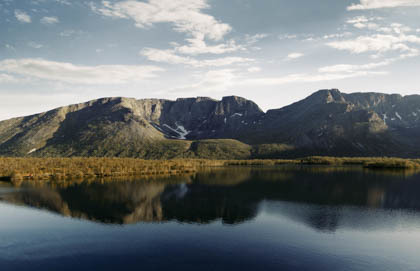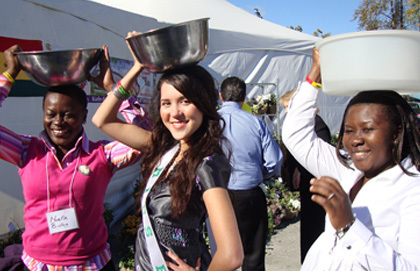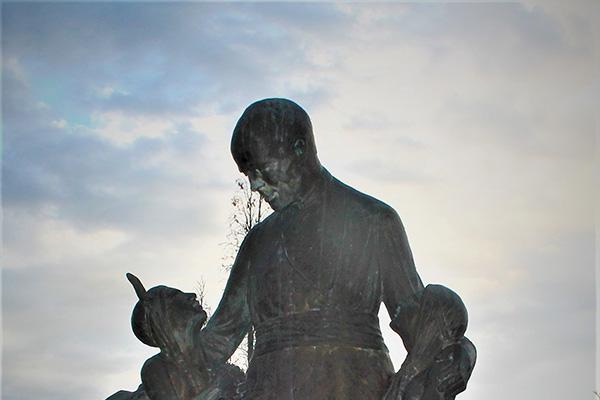“All this was a long time ago, I remember,
And I would do it again….”
–T.S. Eliot, "The Journey of the Magi"
The final report of the Truth and Reconciliation Commission (TRC) on the history and legacy of Indian residential schools (IRS) reminded me of a letter I received in August 1966 while I was boarding at Old Sun, the Anglican residential school on the Blackfoot reserve in southern Alberta. The letter offered me a position as senior boys’ supervisor at Stringer Hall, the Anglican residential hostel in Inuvik, N.W.T., for the 1966-1967 school year. I welcomed a job that would help me better understand Indian and Eskimo students (terms used at the time).
In 1966, I was 21 years old and so naive that I could not imagine that many years later the Anglican Church would regret managing and supporting Indian residential schools. Many of its employees and supporters, including many Aboriginals themselves, would be vilified for their involvement in this Christian mission that seemed so worthwhile and necessary at the time.
Two years earlier, in 1964, I had begun my teacher training in the Faculty of Education at the University of Alberta. An internship on an Indian reserve was a requirement for the cross-cultural education program I joined, and I was assigned to the Blackfoot Reserve (now called the Siksika Nation) 60 miles east of Calgary. During that summer I stayed in the teachers’ wing at Old Sun. When I arrived in May, there were Siksika students in residence, but after the end of June, there were only five people living in the school: the Anglican priest, the Rev. R.F. Brown, three young orphaned Cree girls from Hobbema (the Rosesting children), and me. Mrs. Hilda Red Gun, a local Siksika woman, came to the school to make meals for us and care for the little girls.
Following my summer work on the Blackfoot Reserve, the residential supervisor’s position at Stringer Hall was exactly what I needed to further my understanding of Aboriginal people. It was a fascinating experience, and I took many notes and photographs, all of which have been filed with the TRC. In late August 1966, I boarded a DC-4 at the municipal airport in Edmonton. Twelve hours later, and after many stops at small communities along the Mackenzie River, I arrived at the Inuvik airport, where I was met by the hostel administrator, the Rev. Leonard Holman. We drove to Inuvik, where I settled in to my room at Stringer Hall.
The next day, I toured the hostel and received my job description: supervising 85 senior boys, aged between 12 and 21, housed in three dormitories, for six days a week. I learned I would be responsible for the boys for some 22 hours a day. On most days, I did not need to manage boys during school hours, but if students were too ill to attend classes but not ill enough to be sent to the school infirmary, they remained in the dormitories, where I was responsible for them. Because their homes were far away, the boys were also in residence on weekends and even during school breaks at Christmas and Easter.
By the beginning of September, when classes began at the nearby Sir Alexander Mackenzie School, there were 280 students in residence: 73 per cent Inuit, 16 per cent Dene and 12 per cent Caucasian. A similar number of students resided in Grollier Hall, the Roman Catholic hostel, but that residence had more Dene, fewer Inuit, and about the same percentage of Caucasian students. (Unfortunately, the TRC report does not mention that in the far North, all students, Aboriginal and non-Aboriginal, went to a residential institution if their homes were in small communities without day schools. Also, it does not mention that in the south, the non-Aboriginal children of IRS administrators and staff often attended the residential schools.)
As hard as it is to believe, some children arrived at Stringer Hall wearing the same school clothing they wore when they went home in the late spring, not having bathed or changed in the interval. Some children had been standing in smudge fires during the summer, trying to escape the hordes of bloodsucking insects, and many arrived with infected bug bites in their scalps. Some children also arrived with ear infections so severe that pus was running down their necks.
Fortunately, Stringer Hall had a young nursing sister, Rosalind Malick, who had just arrived from London, England, to do her Christian service. She treated these children with antibiotics and with considerable compassion, as would be expected from a 22-year-old Anglican nurse. It was obvious that the hostel children appreciated the care they received.
To put the students’ lack of cleanliness into context, readers must realize that it wasn’t until the early 1950s that a weekly bath with a change of clothes became the norm for most urban Canadians. For people living on farms and in small communities where water had to be pumped from wells and heated on coal and woodstoves, a bath with a change of clothing was a luxury reserved for special occasions. I know the hostel children appreciated ending a busy week with a hot shower and clean pyjamas, and squeezing themselves between clean sheets in their very own bed, probably as much as other Canadian children did.
Some memories stand out for me. In early December, when the sun had already sunk below the southern horizon, a senior boy complained that he was too sick to attend school. As might be expected in any residential school, some boys would feign illness so they could get a day off from classes, but this 12-year-old was not one of them. I helped him climb the stairs to the infirmary, where the nursing sister diagnosed a ruptured appendix and quickly made arrangements for him to be admitted to the local hospital, where he received emergency surgery. A week later, he was back in residence. Had he been out on the trap line with his parents, he almost certainly would have died.
Also in early December, I spotted a man crosscountry skiing with a group of children on a trail behind Grollier Hall. The next day, during my twohour break from residential duties, I walked over to the ski hut and met Father Jean-Marie Mouchet, a Catholic priest who was teaching the Dene and Inuit children to ski. I told him that I was the senior boys’ supervisor at Stringer Hall, a cross-country skier, and I would like to ski with his club. He said that I could use the trails and that I should tell the Anglican students that if they wanted to learn to ski, he would equip and teach them. My parents sent my skis to Inuvik, and a number of the children from Stringer Hall joined the ski club.
I recall seeing students from Grollier Hall – Jeanette Tourangeau, Peter Allen, and Sharon and Shirley Firth – out on the trails in those cold, dark days. Father Mouchet had strung electric lights through the trees above the ski trail, which were certainly needed at that time of year when the sun was below the horizon.
I will never forget something that Father Mouchet told me late one afternoon as we watched the children returning from a 90-minute training run on the ski trail: “All these children need is to learn to overcome themselves and then nothing will stop them.” He was correct, of course. In a few years, a number of those Aboriginal skiers became members of the Canadian national cross-country ski team, winning medals across North America and Europe.
Many people probably are unaware that many residential school employees were Aboriginals, which was true at both Old Sun and Stringer Hall. For example, at Stringer Hall, two of the six supervisors were young Inuit women, Annie and Lucy, who, contrary to considerable testimony in the TRC report, spoke to the young Inuit children in their mother tongue. Mrs. Thomas, a Dene who, as the school’s seamstress, made parkas and mukluks for the children, lived in the hostel with her four-yearold daughter.
Relationships between staff and students were often very cordial. I fondly recall the Inuit children coming to my room on Saturday afternoons to take Ms. Malick and me for walks. Often, we would climb the hill behind the hostel so the children could slide down the snow-covered road on cardboard boxes. At other times, we walked out on the ice of the Mackenzie River, carefully avoiding the dogsled trails used by people going to trap lines or hunting camps, or travelling between communities. The children knew how dangerous dog teams could be because all of them knew people who had been mauled by dogs. During that winter, a young child was killed by a dog team on a trail close to Fort McPherson as her parents watched in horror. Life in the North was precarious, and these children knew it.
During our winter walks, I would practise the Inuktitut expressions the children had taught me. I had told some very young Inuit children that if they taught me to speak Inuktitut, I would help them learn to speak English. By February, the children could speak basic English, but all I could say were a few Inuktitut words that were taboo. The children encouraged me to say these phrases and found it very amusing. “Funny, funny, Mr. Clifton,” they would say. The little girls, especially, would turn their backs on me, cover their mouths and laugh quietly while holding onto each other. I called this group “the giggling girls,” thus giving them a new English word to learn.
I do not recall the children crying when they arrived at Stringer Hall in the autumn. Rather, the new arrivals, especially the Inuit children, were stoic and reserved, hesitant to interact with children they did not know. Many of them were shy, but all of them were excited to be at school. The older children quickly found friends and relatives, and decided which bed they would have and who would sleep in the beds next to them.
One of the obvious signs of the difficulties young children have in adapting to new and strange environments is bedwetting. But, as I remember, bedwetting was infrequent, and when it did occur, it most often happened after the children had watched a movie in the gymnasium, stayed up later than normal and consumed soft drinks.
It is now obvious that some children were abused in the residential schools, both by other students and by staff members. I believe that all adults who brutalized children should be punished for their crimes. So should administrators from both the Church and the Department of Indian and Northern Affairs who covered up these crimes.
But the adults I knew in residential schools genuinely wanted to help the children receive a good education to prepare them for the modern world. Most were caring people. Granted, some IRS employees were cranky, probably because they had been supervising large groups of children for many years. Many still clung to the idea that strict discipline was the best way to keep children from taking the wrong path. Most employees were trying to fulfill the evangelistic calling of committed Christians: to help the poor, tend to the weak and treat the sick.
Some evidence exists, in published accounts, correspondence and conversations I have had with former IRS workers and students, suggesting that my experiences were quite typical. For this reason, I think that the TRC survivors’ stories of abuse and misery, as heartfelt and horrifying as they are, present a partial and skewed picture of the entire IRS experience.
Perhaps there are only three things that can and should be done at this time. First, we can encourage those who worked in the IRS system and those who once were students to talk about all of their experiences, not just the negative ones. Second, as Christians say their Sunday prayers for the survivors of residential schools, they could say a few kind words for the committed, but forgotten, Christians who worked tirelessly, often in dangerous and difficult circumstances, for long hours with very little pay, helping IRS children. Finally, the churches could take a stronger stand and recognize the good work that many committed Christians did in a mission that, at the time, seemed so appropriate – even imperative.






